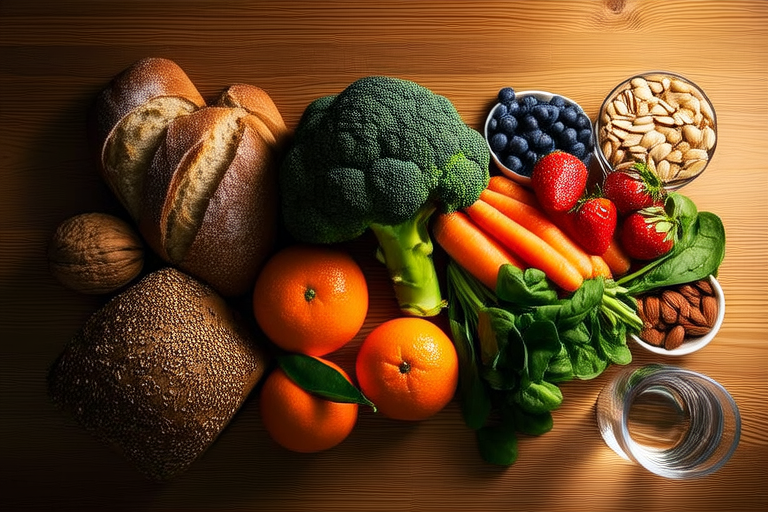10 Essential Guidelines for a Balanced and Healthy Diet
A balanced and healthy diet is the cornerstone of physical and mental well-being. It provides the body with essential nutrients, supports optimal functioning, and helps prevent chronic diseases. In today’s fast-paced world, where processed foods and convenience meals dominate, maintaining a nutritious diet can be challenging. However, understanding and implementing key dietary principles can make a significant difference in your health. This article outlines ten essential guidelines to help you achieve a balanced diet that promotes vitality and longevity.
1. Prioritize Whole Foods Over Processed Options
Whole foods, such as fruits, vegetables, whole grains, nuts, seeds, and lean proteins, are minimally processed and retain their natural nutrient content. They provide vitamins, minerals, fiber, and antioxidants that support overall health. Processed foods, on the other hand, often contain added sugars, unhealthy fats, and artificial additives that can harm your body over time. To prioritize whole foods, shop the perimeter of the grocery store, where fresh produce, dairy, and meats are typically located. For example, choose brown rice instead of white rice or an apple instead of a packaged fruit snack.
2. Incorporate a Variety of Food Groups
Diversity in your diet ensures that you receive a wide range of nutrients. Each food group offers unique benefits: fruits and vegetables are rich in vitamins and fiber, grains provide energy, proteins support muscle repair, and dairy or fortified alternatives offer calcium for bone health. Aim to include all food groups in your daily meals. For instance, a balanced lunch might consist of grilled chicken (protein), quinoa (grain), steamed broccoli (vegetable), and a side of mixed berries (fruit).
3. Control Portion Sizes
Even healthy foods can contribute to weight gain if consumed in excess. Controlling portion sizes helps maintain a healthy weight and prevents overeating. Use smaller plates, measure servings, and pay attention to hunger cues. For example, a serving of cooked pasta should be about the size of a tennis ball, while a portion of lean meat should resemble a deck of cards. Practicing mindful eating—savoring each bite and avoiding distractions like TV—can also help regulate portions.
4. Limit Added Sugars and Refined Carbohydrates
Added sugars and refined carbs, found in sugary beverages, pastries, and white bread, can lead to blood sugar spikes, weight gain, and increased risk of chronic diseases. Instead, opt for natural sweeteners like honey or maple syrup in moderation and choose whole grains over refined ones. Swap soda for sparkling water with a splash of lemon, and replace candy with fresh fruit for a healthier treat.
5. Choose Healthy Fats Over Unhealthy Ones
Fats are essential for brain function, hormone production, and nutrient absorption, but not all fats are created equal. Focus on unsaturated fats, such as those found in avocados, olive oil, nuts, and fatty fish like salmon. Avoid trans fats and limit saturated fats, which are commonly found in fried foods, baked goods, and processed snacks. For example, use olive oil for cooking instead of butter and snack on almonds rather than chips.
6. Stay Hydrated with Water
Water is vital for digestion, circulation, temperature regulation, and detoxification. Many people mistake thirst for hunger, leading to unnecessary snacking. Aim to drink at least eight glasses of water daily, adjusting for activity level and climate. Carry a reusable water bottle to stay hydrated throughout the day, and start meals with a glass of water to curb overeating.
7. Include Lean Protein Sources
Protein is crucial for building and repairing tissues, supporting immune function, and maintaining muscle mass. Opt for lean protein sources such as poultry, fish, beans, lentils, tofu, and low-fat dairy. Plant-based proteins like chickpeas and quinoa are excellent options for vegetarians and vegans. For example, incorporate grilled fish into your dinner rotation or add black beans to salads and soups for a protein boost.
8. Emphasize Fiber-Rich Foods
Fiber aids digestion, promotes satiety, and helps regulate blood sugar levels. It is abundant in whole grains, legumes, fruits, vegetables, and nuts. A high-fiber diet can also reduce the risk of heart disease and certain cancers. Start your day with oatmeal topped with berries, include a serving of vegetables with every meal, and snack on air-popped popcorn or raw veggies with hummus.
9. Practice Moderation, Not Deprivation
A sustainable diet allows for occasional indulgences without guilt. Completely eliminating favorite foods can lead to cravings and binge eating. Instead, practice moderation by enjoying treats in small amounts. For example, share a dessert with a friend or savor a single square of dark chocolate after dinner. This approach fosters a positive relationship with food and prevents feelings of deprivation.
10. Plan and Prepare Meals Ahead of Time
Meal planning and preparation save time, reduce stress, and help you make healthier choices. Set aside time each week to plan menus, create shopping lists, and prep ingredients. Cook large batches of soups, stews, or casseroles to freeze for busy days. Having nutritious meals readily available reduces the temptation to order takeout or grab unhealthy snacks.
Conclusion
Adopting these ten essential guidelines can transform your diet and enhance your overall health. By prioritizing whole foods, controlling portions, staying hydrated, and planning ahead, you can nourish your body and mind effectively. A balanced diet not only supports physical well-being but also boosts energy levels, improves mood, and reduces the risk of chronic illnesses. Remember, small, consistent changes lead to lasting results. Start incorporating these principles today to enjoy a healthier, more vibrant life.










